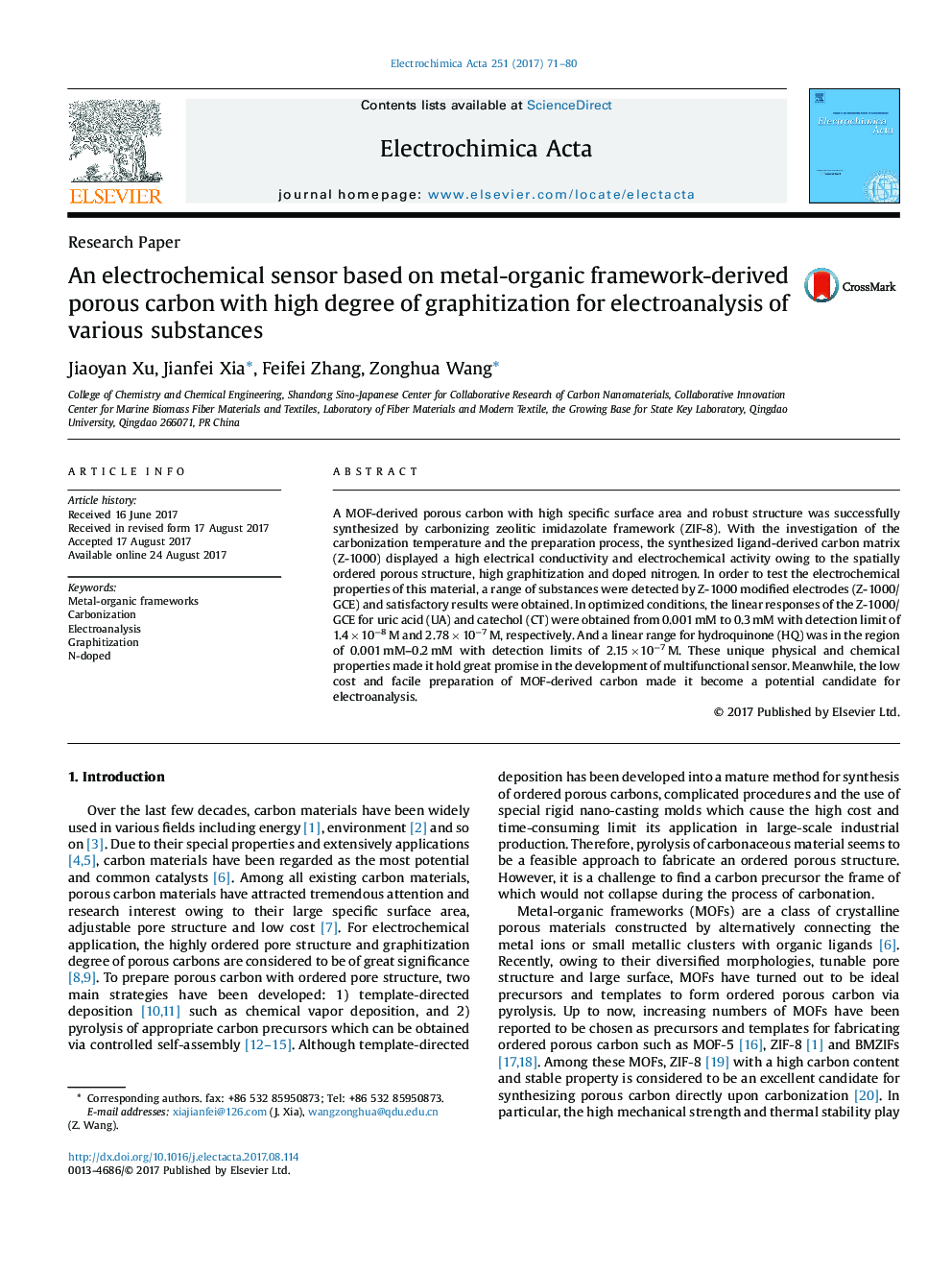| Article ID | Journal | Published Year | Pages | File Type |
|---|---|---|---|---|
| 6469869 | Electrochimica Acta | 2017 | 10 Pages |
â¢Carbonization products at different temperatures were prepared.â¢The effect of carbonization process was investigated.â¢The electrochemical properties of Z-X are examined and explored from the point of structure and elemental composition.â¢Z-1000 was applied as electrochemical detection platform.â¢The proposed sensor was applied to detect UA, HQ and CT with satisfactory results.
A MOF-derived porous carbon with high specific surface area and robust structure was successfully synthesized by carbonizing zeolitic imidazolate framework (ZIF-8). With the investigation of the carbonization temperature and the preparation process, the synthesized ligand-derived carbon matrix (Z-1000) displayed a high electrical conductivity and electrochemical activity owing to the spatially ordered porous structure, high graphitization and doped nitrogen. In order to test the electrochemical properties of this material, a range of substances were detected by Z-1000 modified electrodes (Z-1000/GCE) and satisfactory results were obtained. In optimized conditions, the linear responses of the Z-1000/GCE for uric acid (UA) and catechol (CT) were obtained from 0.001Â mM to 0.3Â mM with detection limit of 1.4Â ÃÂ 10â8Â M and 2.78Â ÃÂ 10â7Â M, respectively. And a linear range for hydroquinone (HQ) was in the region of 0.001Â mM-0.2Â mM with detection limits of 2.15Â ÃÂ 10â7Â M. These unique physical and chemical properties made it hold great promise in the development of multifunctional sensor. Meanwhile, the low cost and facile preparation of MOF-derived carbon made it become a potential candidate for electroanalysis.
Graphical abstractDownload high-res image (107KB)Download full-size image
